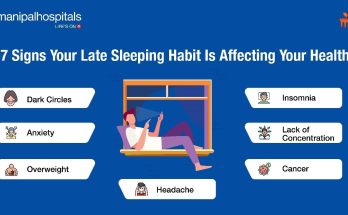In recent years, home workouts have surged in popularity. Whether due to convenience, cost savings, or global events prompting gym closures, more people are discovering that effective exercise routines can be done right in their living rooms. But with so many workout trends, apps, and YouTube videos flooding the internet, it’s easy to wonder: which home workouts actually deliver real results?
The truth is, you don’t need fancy equipment or an elaborate setup to get fit at home. The most effective home workouts focus on simplicity, consistency, and progressive challenge. In this article, we’ll explore the key components of home workouts that work—and share practical tips and routines to help you succeed.
Why Choose Home Workouts?
Before diving into what works, it’s worth understanding why home workouts are such a great option:
-
Convenience: No commuting to a gym or waiting for equipment means you can squeeze in exercise anytime.
-
Cost-effective: No monthly memberships or expensive gear required.
-
Privacy: Work out without feeling self-conscious or distracted.
-
Flexibility: Adapt workouts to your schedule and fitness level.
-
Variety: With endless online resources, you can explore yoga, strength training, HIIT, pilates, and more—all at home.
The challenge is designing workouts that are efficient and avoid common pitfalls like boredom, poor form, or lack of progression.
What Makes a Home Workout Actually Work?
1. It Targets Multiple Muscle Groups
Effective workouts engage various muscle groups rather than focusing on isolated movements. This approach burns more calories, improves overall strength, and enhances functional fitness.
2. It Includes Strength and Cardio Elements
Combining strength training with cardiovascular exercise boosts metabolism and cardiovascular health, while helping build muscle tone.
3. It Is Progressive
Workouts should become more challenging over time, either by increasing reps, adding resistance, or shortening rest periods to prevent plateaus.
4. It Fits Your Schedule
A 20- to 30-minute workout done consistently beats a sporadic hour-long session. Frequency and regularity are key.
5. It Emphasizes Good Form
Proper technique prevents injury and ensures you are working muscles effectively.
Effective Home Workouts You Can Try
Bodyweight Circuit Training
Bodyweight exercises are a cornerstone of home workouts because they require no equipment and build strength, endurance, and mobility.
Sample beginner circuit:
-
10 squats
-
10 push-ups (modify by doing on knees if needed)
-
15 glute bridges
-
20-second plank
-
15 jumping jacks
Complete the circuit 2-3 times, resting 30-60 seconds between rounds. As you progress, increase repetitions or add a fourth round.
High-Intensity Interval Training (HIIT)
HIIT involves short bursts of intense activity followed by brief rest periods. It’s an efficient way to burn fat and improve cardiovascular fitness in less time.
Example HIIT session (20 minutes):
-
30 seconds of high knees
-
30 seconds rest
-
30 seconds mountain climbers
-
30 seconds rest
-
30 seconds jump squats
-
30 seconds rest
-
Repeat for 4 rounds
HIIT can be adjusted for any fitness level by modifying the intensity and duration.
Yoga and Mobility Workouts
Yoga improves flexibility, balance, and mental well-being, making it a great complement to strength and cardio workouts.
Try beginner-friendly sequences that focus on breathing, gentle stretching, and core stability. Apps and online videos can guide you through sessions lasting 20-40 minutes.
Resistance Band Training
Resistance bands are inexpensive, portable, and versatile tools to add resistance to bodyweight exercises.
Basic band exercises include:
-
Banded squats
-
Seated rows
-
Glute kickbacks
-
Lateral band walks
Using bands helps increase strength gains while being gentle on joints.
Tips for Maximizing Your Home Workouts
Create a Dedicated Space
Having a designated workout area—even a small corner—can improve focus and motivation. Keep your mat, bands, or weights handy.
Schedule Workouts Like Appointments
Consistency is easier when exercise is planned and prioritized like any important task.
Warm-Up and Cool Down
Spend 5-10 minutes warming up with dynamic movements (arm circles, leg swings) and cool down with stretching to reduce injury risk.
Track Progress
Keep a workout journal or app to note exercises, reps, and how you feel. Tracking helps maintain motivation and ensures gradual progress.
Mix It Up
Avoid boredom and plateaus by varying your workouts. Alternate between circuits, yoga, HIIT, or resistance training across the week.
Prioritize Nutrition and Hydration
Exercise results improve significantly when paired with balanced nutrition and proper hydration.
Overcoming Common Home Workout Challenges
Lack of Motivation
Set clear goals, enlist a workout buddy virtually, or use apps that provide structure and reminders.
Distractions
Turn off notifications, inform household members of your workout time, and minimize interruptions.
Limited Equipment
Most effective workouts can be done with minimal or no equipment. Improvising with household items like water bottles or backpacks can add resistance.
Conclusion
Home workouts absolutely can work—when designed thoughtfully with a focus on full-body engagement, balanced intensity, and consistency. Whether you prefer bodyweight circuits, HIIT, yoga, or resistance bands, there are countless ways to improve your fitness without stepping foot in a gym.
The key is to start simple, progress gradually, and stay committed. With these principles, you’ll build strength, boost endurance, and enhance well-being, all from the comfort of your home.
Ready to begin? Choose one of the sample workouts above, schedule your sessions, and get moving today. Your future self will thank you.




